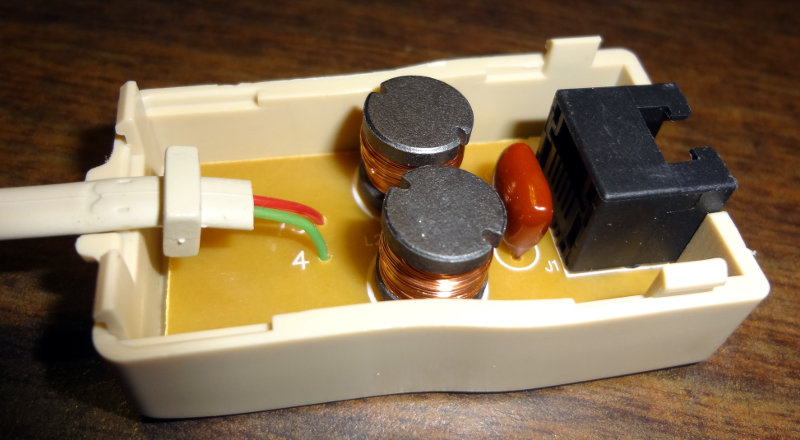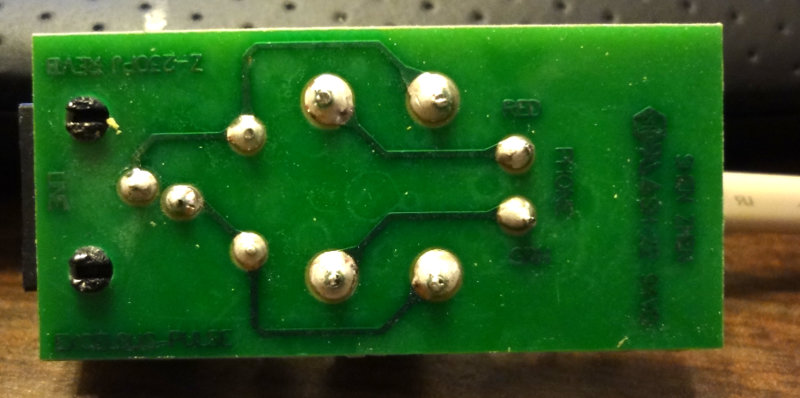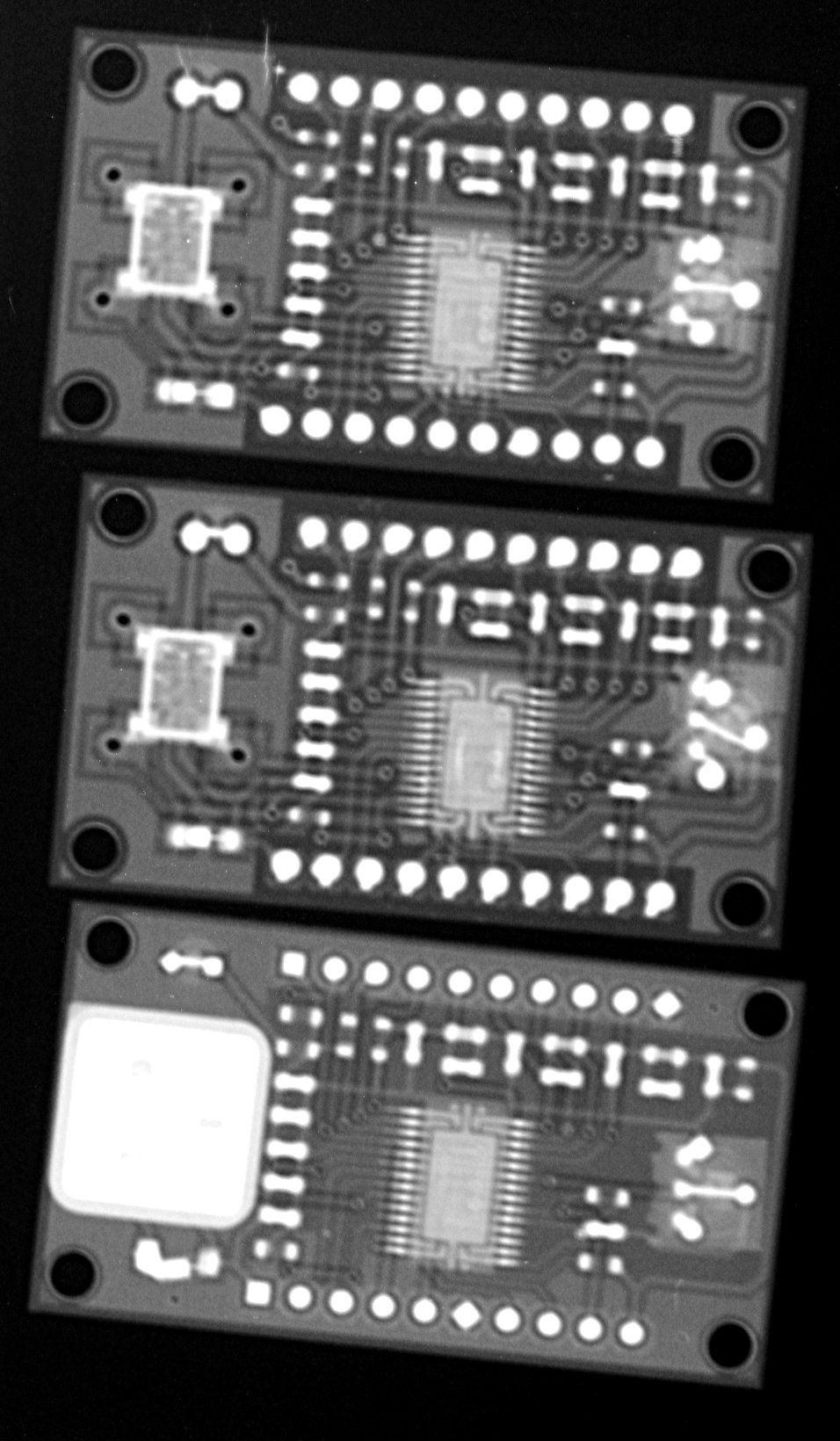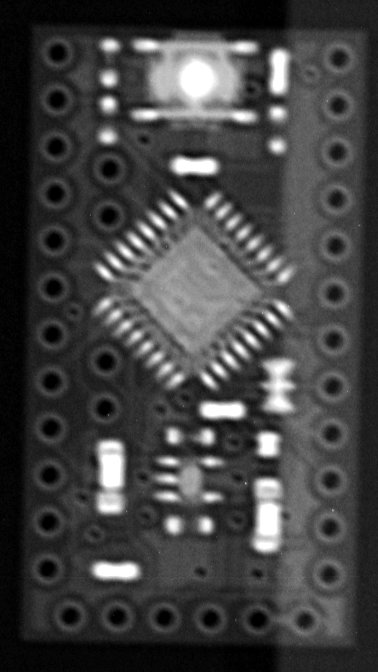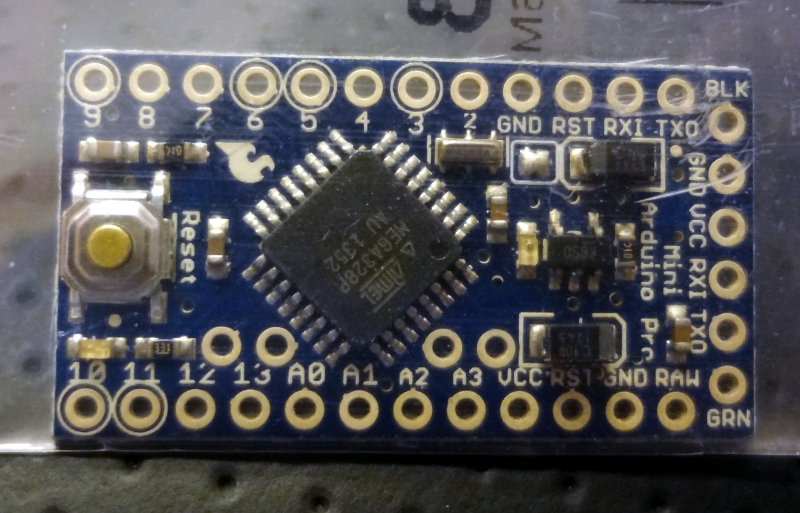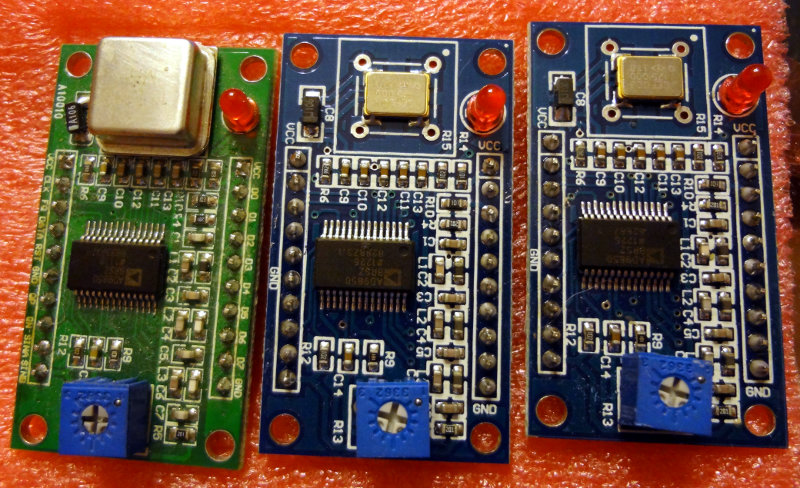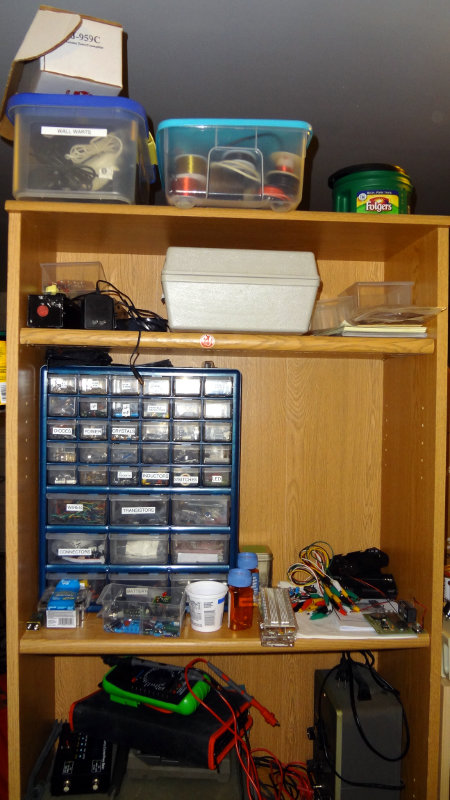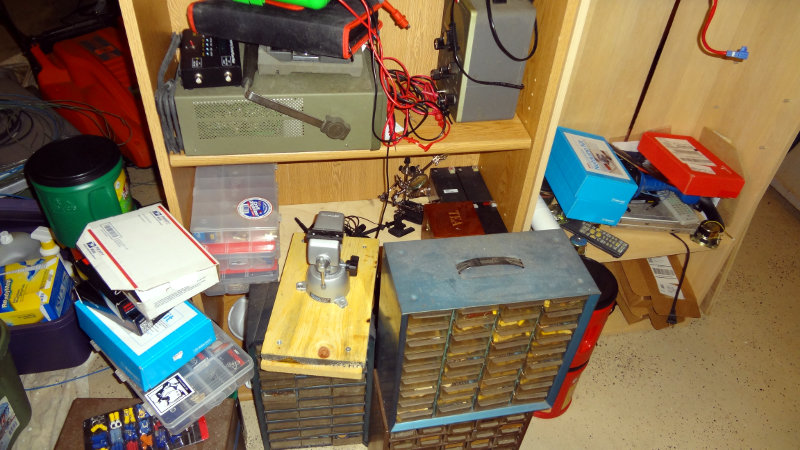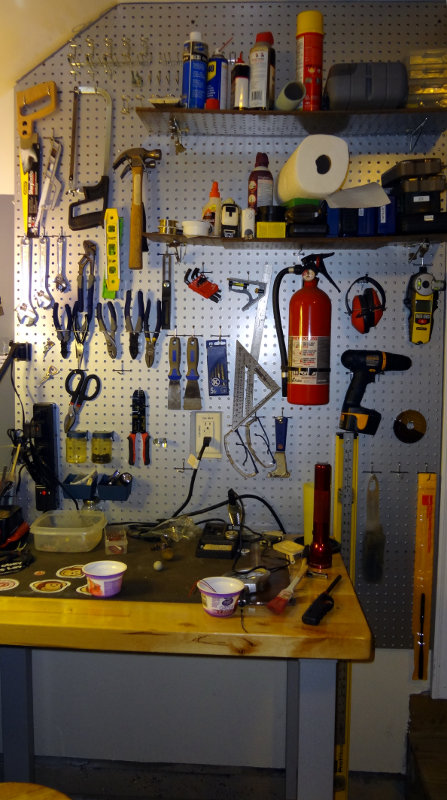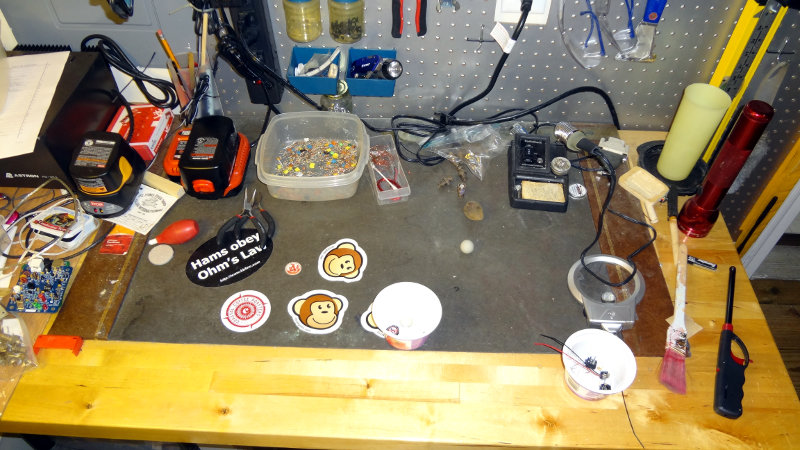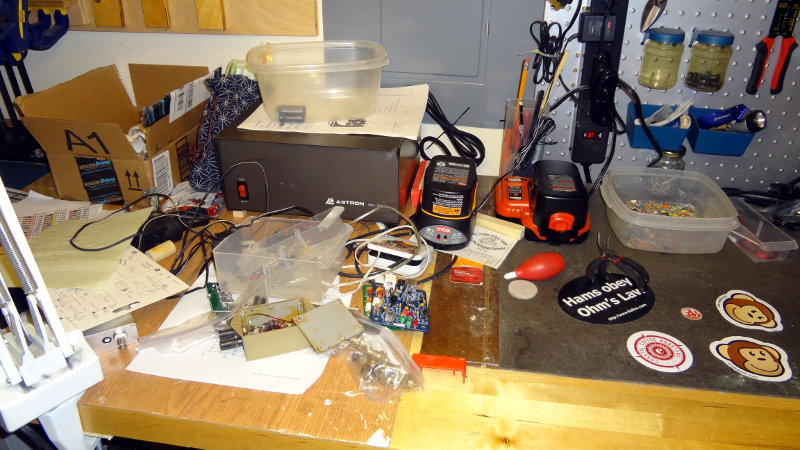Found a DSL phone line filter from the Earthlink DSL days in one of my junk boxes. This particular one is an Excelsus Z-BLocker DSL filter Model Z-230PJ. The www.excelsus-tech.com website printed on the back is dead, but a bit of Googling brought me to Pulse Electronics, so maybe there was a name change or some merger-ing happening.
Since I’m not likely to be going back to DSL service any time soon, I figured I’d have a look to see what’s inside. DissectionDisassembly was pretty easy. The top is just held in by clips and not glued, so a little bit of prying with a thin bladed screwdriver and it pops right off. There’s not a whole lot to see inside: a couple of inductors and a capacitor soldered onto a circuit board.
It’s a pretty simple device, just an inductor on each line with a capacitor in parallel (I think that makes it a low pass filter on each line).

The inductors aren’t labeled on top, so I don’t know what value they are. If I’m reading the code correctly, the capacitor is 22 μF.
I wonder what kind of project I can come up with to make use of this…

